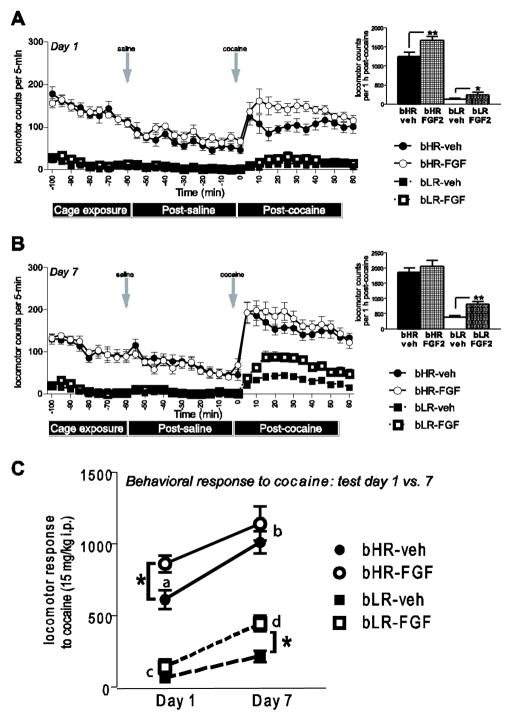Figure 2.
Locomotor activity during chamber pre-exposure, post-saline and post-cocaine test periods. On each test day, locomotor activity was monitored during a 45-min chamber pre-exposure period, 60-min following a saline injection, and 60-min following a cocaine injection. On test day 1 (when animals were first exposed to cocaine), bHRs were markedly more active than bLRs across test phases (A). Neonatal FGF2 exposure produced an enhanced behavioral response to acute cocaine in both phenotypes (inset A). On test day 7 (following a week of cocaine treatment), neonatal FGF2 treatment specifically increased bLRs’ locomotor response to cocaine, indicating enhanced cocaine sensitization compared to vehicle-treated bLRs (B and inset). Although all bHR and bLR rats became sensitized to cocaine by day 7 (showing enhanced cocaine-induced activity on day 1 versus 7; indicated by “a” versus “b” for bHR and “c” versus “d” for bLR), neonatal FGF2 treatment lead bLRs to exhibit a greatly enhanced cocaine sensitization compared to neonatal vehicle-exposed bLRs (C). n=12 for each experimental group; ** indicates p<0.01; * indicates p<0.05

